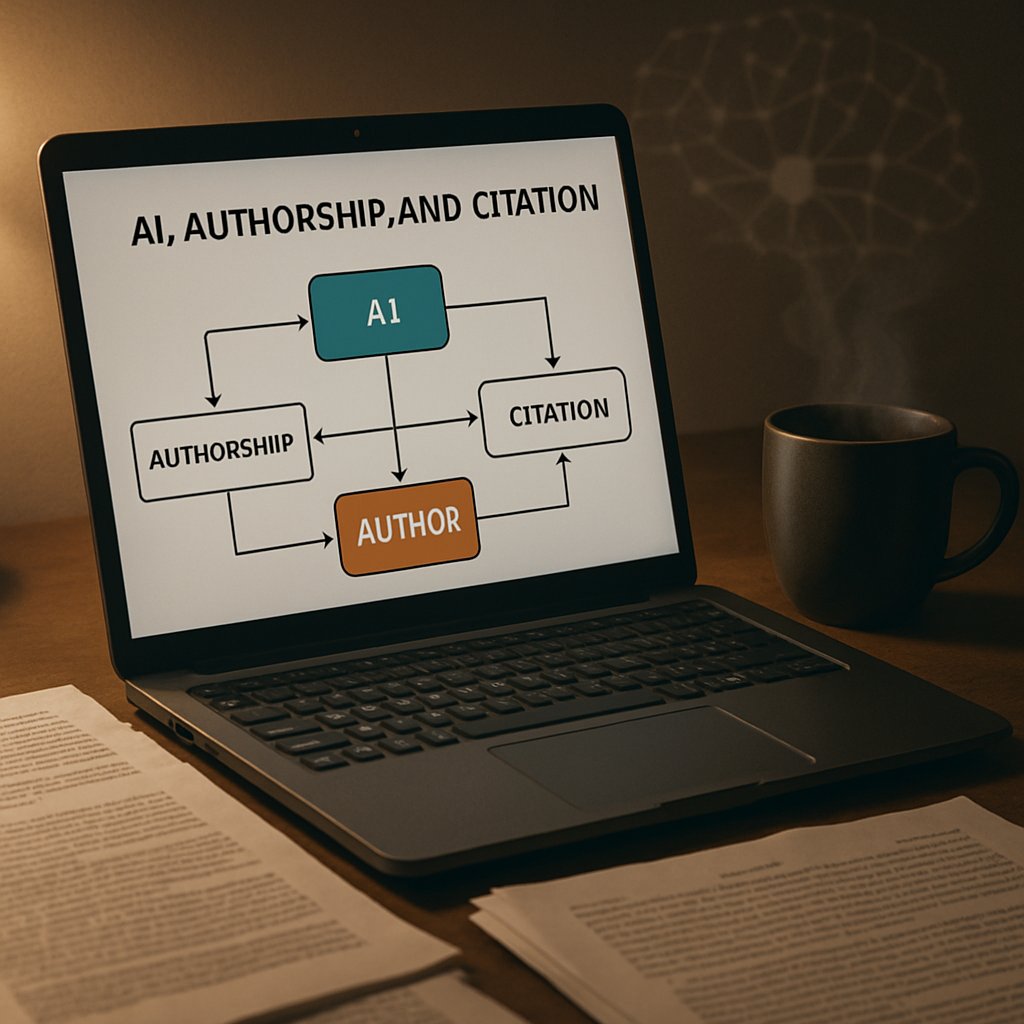Unraveling the Citation Conundrum: How AI is Changing the Game for Scholarly Writing
In a world where Artificial Intelligence (AI) is becoming an ever-present tool, especially in research and academic writing, we're faced with some pressing ethical dilemmas. Ever asked a large language model (LLM) like ChatGPT to help you draft an academic piece? If so, you might have experienced a kind of mental fog regarding the originality of what you created. Well, Brian D. Earp and his co-authors—Haotian Yuan, Julian Koplin, and Sebastian Porsdam Mann—take a deep dive into this phenomenon in their recent commentary on what they call the "provenance problem." Essentially, they explore how the rise of generative AI challenges our long-standing norms on citation and authorship.
Let’s break it down and see what this all means for researchers and writers like you!
What’s the Provenance Problem?
Think about it: you’re sitting at your desk, battling a stubborn writer's block, and you decide to enlist the help of AI to push through. You toss in some prompts, and voilà—out pops a neatly constructed paragraph. But here’s where things get a little murky.
Imagine that paragraph closely resembles ideas and phrases from a long-forgotten paper by an author named Smith from 1975. Now, you’ve never read Smith’s work, and neither has the AI explicitly mentioned it. As a result, you don’t cite her. Here lies the provenance problem: the writer (you) genuinely believes they've come up with original content, while in reality, they’ve unwittingly drawn heavily on someone else's intellectual labor. This creates an ethical gray area that isn’t exactly covered by traditional definitions of plagiarism.
Breaking Down the Dilemmas
Intent Matters, but So Does Attribution
One of the most common notions surrounding plagiarism is that it involves a deliberate act: knowingly copying another’s work with the intent to deceive. However, as Earp et al. argue, with generative AI, we’re seeing scenarios where intent isn’t even on the table. You didn't mean to steal Smith's ideas; you didn’t even know they existed!
In traditional cases of plagiarism, you might recognize that credit must go to the original source. In AI-generated writing, however, the idea of "credit" becomes complex. It’s not just about giving someone their due; it’s about understanding who shaped your thoughts in the first place.
The Role of AI: A Complex Mediator
When you use tools like ChatGPT, the AI acts as a mediator between vast stores of text and your own writing. The way it operates is a bit like having a conversation with someone who has also read Smith and has indirectly influenced your work. Unlike traditional conversations, the AI doesn’t have a memory that you can tap into. It pulls from everything it has “eaten” during its training, including potentially relevant papers it couldn't possibly recall in detail, such as our friend Smith's 1975 paper.
The Ethical Stakes are High
A New Kind of Attributional Harm
Earp and his colleagues introduce a new category of ethical harm regarding attribution — not the classic plagiarism, but rather an attributional harm that stems from a lack of awareness of hidden influences.
Suppose the AI draws on Smith’s ideas and your work flows smoothly from it—this situation creates a responsibility gap. And it raises questions like: Who’s responsible for the uncredited use of Smith’s work? The scholar using AI? The AI model itself? The uncredited author, still waiting for recognition?
The Burden of Responsibility
The authors suggest that scholars might need to take on a more significant responsibility when they use AI tools. This could mean running AI-generated text through plagiarism checkers or conducting literature reviews to ensure they aren't inadvertently claiming credit for someone else’s ideas. They also propose the idea of epistemic transparency, encouraging researchers to clarify how much AI tools were involved in their writing. Would such transparency address the problem? Not entirely, but it would provide context.
Implications for the Future of Scholarly Work
Collaboration with AI
The challenges presented by AI call for a shift in how we think about authorship. Perhaps the focus should be less on individual credit and more on collaborative knowledge-building. This would mean recognizing that ideas are often built upon the work of many—AI or human.
Rethinking Traditional Citation Norms
Currently, scholarship relies heavily on the assumption that ideas can be traced back to individual authors. With AI blurring these lines, there might be a need to rethink citation norms entirely. Should we move towards a more fluid model of citation that acknowledges the multiple influences contributing to a piece of work? This could redefine how academic credit is assigned.
Key Takeaways
Understanding the Provenance Problem: The use of AI in writing can lead to unintentional plagiarism-like scenarios where original authors go uncredited.
Intent vs. Attribution: It's crucial to separate the intent of an author and the acknowledgment of intellectual contributions in the age of AI.
Responsibility Gaps Exist: The responsibility for acknowledging contributions from AI seems vague — who is to blame when citations are unclear?
Push for Transparency: Authors should consider clarifying their reliance on AI and, where possible, be more thorough in their sourcing efforts.
Rethink Collaboration Models: Moving towards a more collaborative model of scholarship may offer new ways to recognize and appreciate intellectual contributions in a digital age.
As we navigate this evolving landscape, it’s essential to engage with these ideas thoughtfully. AI might be helping us write better, but the undercurrents of authorship and ethics will continue to shape the academic world for years to come. Let's embrace these changes while standing firm on the principles of fairness and recognition!

